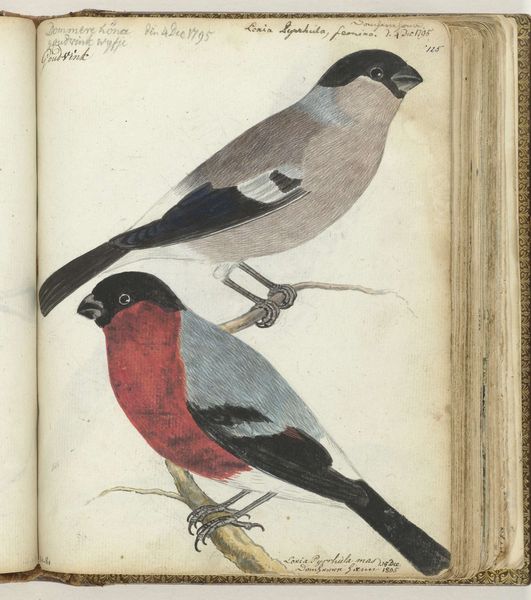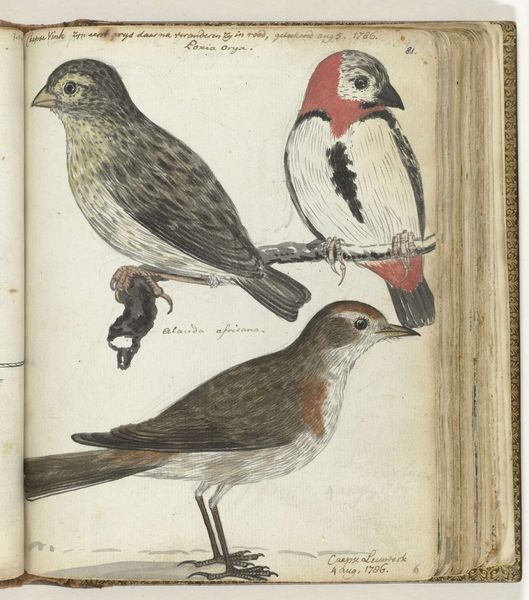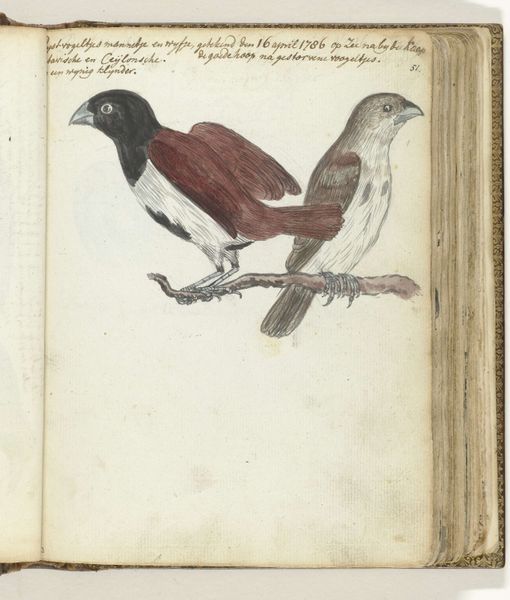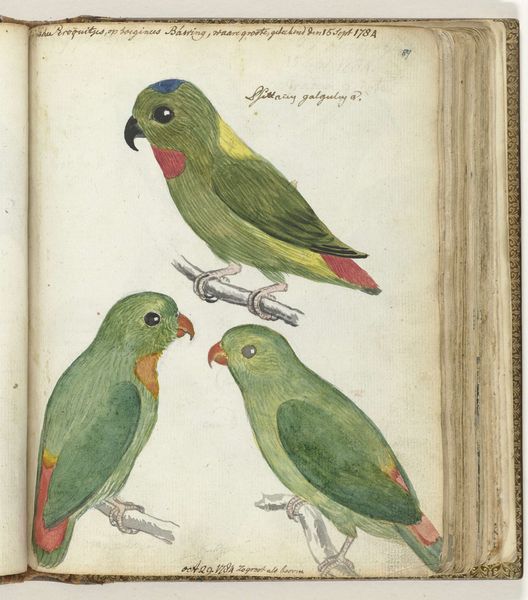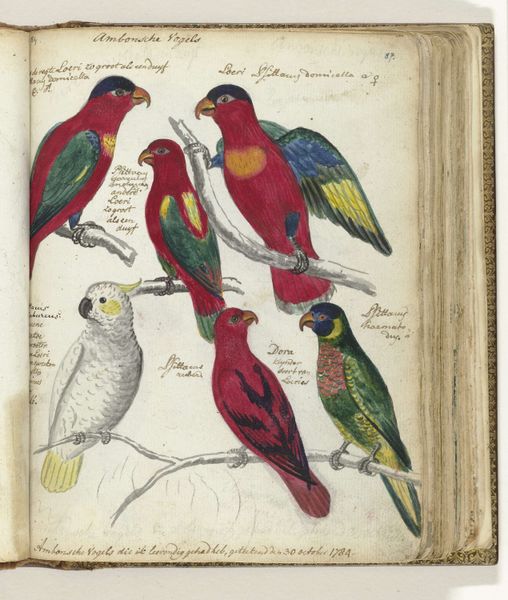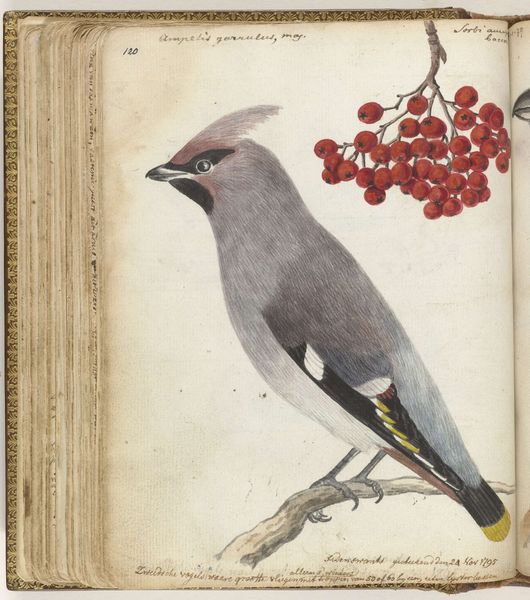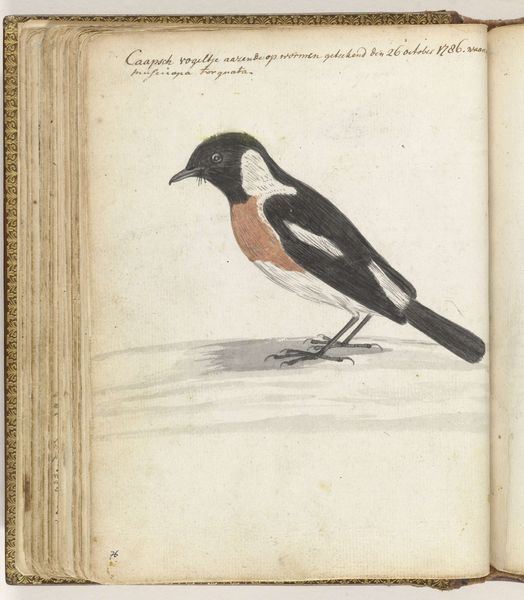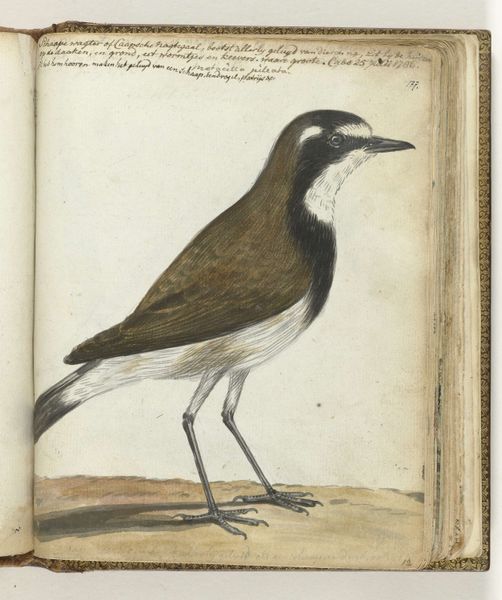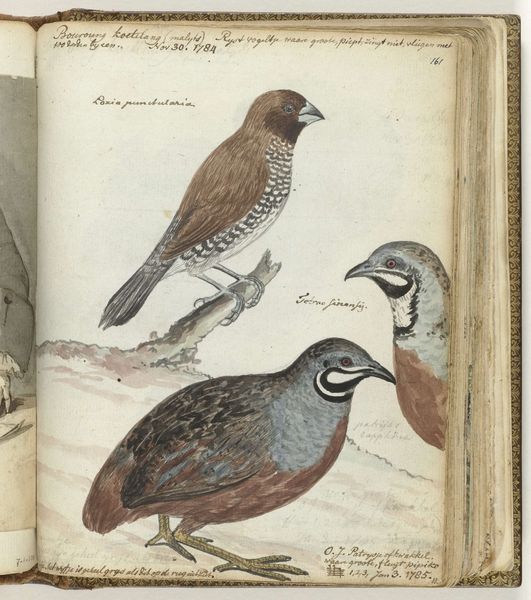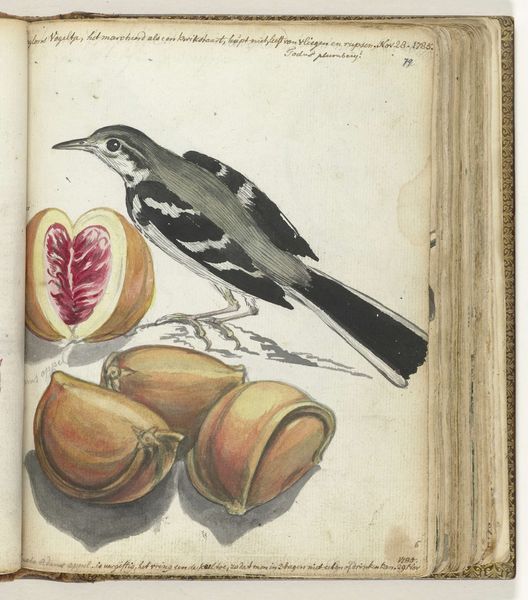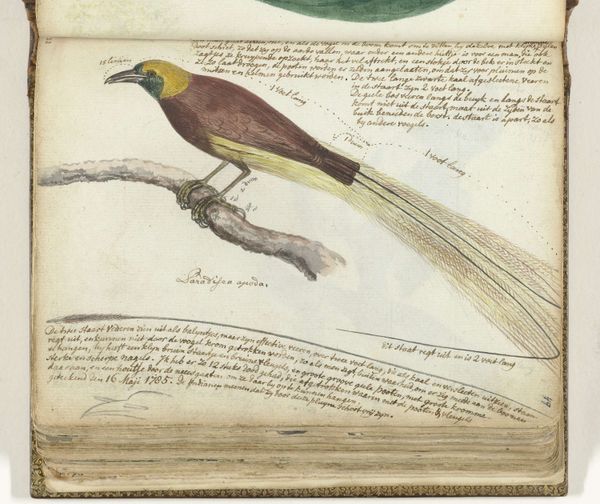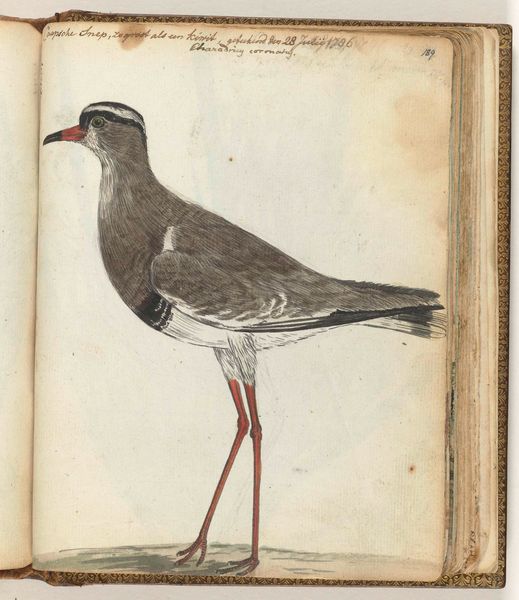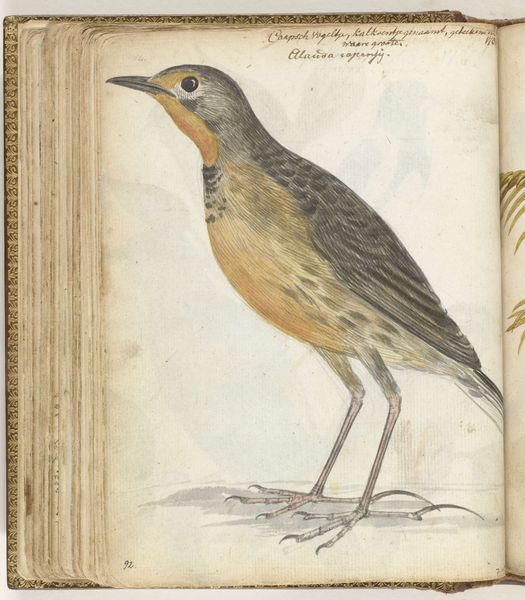
drawing, painting, paper, watercolor
#
portrait
#
drawing
#
painting
#
paper
#
watercolor
#
coloured pencil
#
folk-art
#
academic-art
#
naturalism
Dimensions: height 195 mm, width 155 mm
Copyright: Rijks Museum: Open Domain
Curator: What a captivating page! Jan Brandes, a Dutch artist and clergyman, likely created this watercolor and ink drawing, entitled "Cape Birds", sometime around 1786 or 1787. Editor: It's immediately striking – a lovely visual record. The arrangement feels deliberately organized, not quite organic. There’s an almost heraldic quality to their placement. Curator: Precisely! Brandes documented what he saw, but within a scientific and colonial framework. As a chaplain for the Dutch East India Company, his role wasn't just spiritual, but also observational, gathering data on the flora and fauna. These images played a part in expanding the Western world's knowledge but also in shaping its understanding of those places and people. Editor: Yes, there’s an assertiveness of observation. These aren’t just birds; they are specimens, carefully delineated. I am curious about the choice of species, and the different colours on each. Do the plumage variations reflect anything specific in local symbolism? Curator: He may have included colour and plumage differences to denote distinct subspecies or regional variations of each one. Also, his detailed labeling contributes to a kind of 'cataloging' approach which helped Westerners categorise the non-Western world around them. These observations served a dual purpose, advancing scientific knowledge while simultaneously fueling colonial interests. Editor: Looking closer, some are brighter, more vividly coloured than the others. Did color symbolism hold specific meaning for him, given his clerical role? Perhaps representing purity, hope, something beyond the simple identification of species. Curator: It is entirely possible, although any specific meaning he attached remains unclear from the historical record. Brandes likely blended objective documentation with personal impressions and symbolic overlays that mirrored his own belief systems, or those expected by his European patrons. Editor: Well, it's a work that beautifully layers observation, intention, and perhaps, the unconscious influence of its time. These birds, forever perched on this page, silently testify to the complex intersections of art, science, and the colonial project. Curator: Indeed. It really makes you think about the social underpinnings of what we consider scientific visual representation, as well as where, literally, we find ourselves in the bigger scheme of things.
Comments
No comments
Be the first to comment and join the conversation on the ultimate creative platform.
